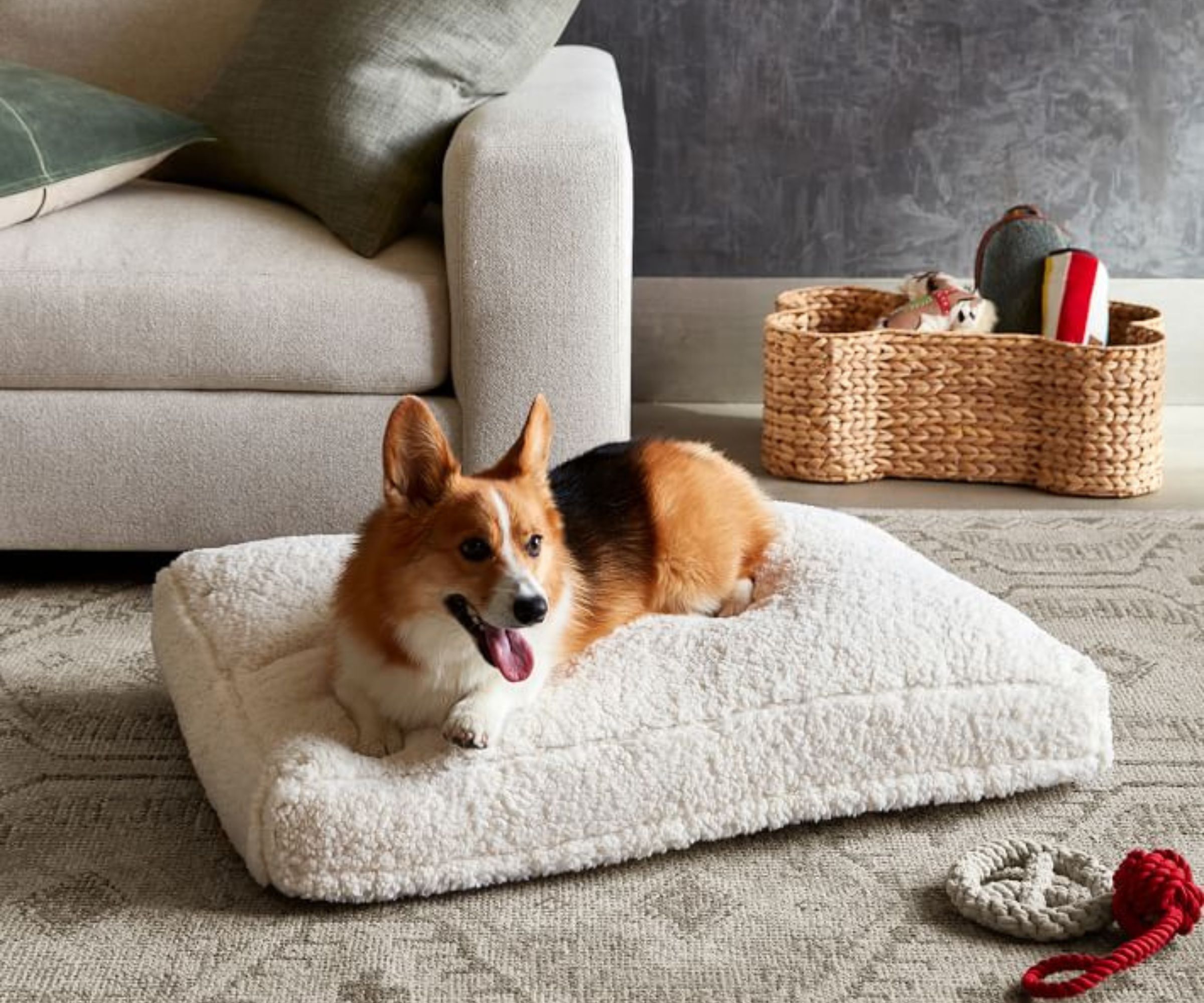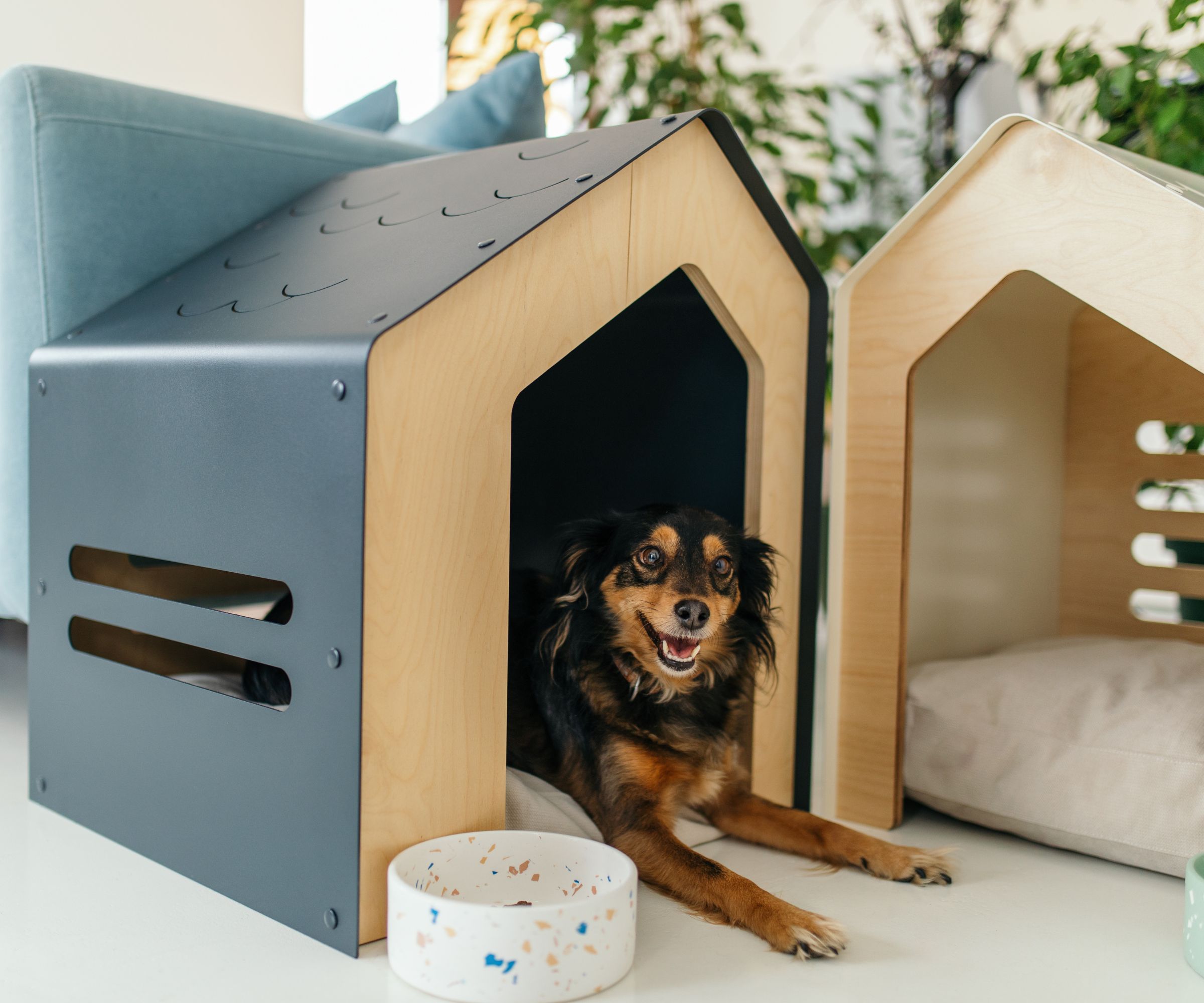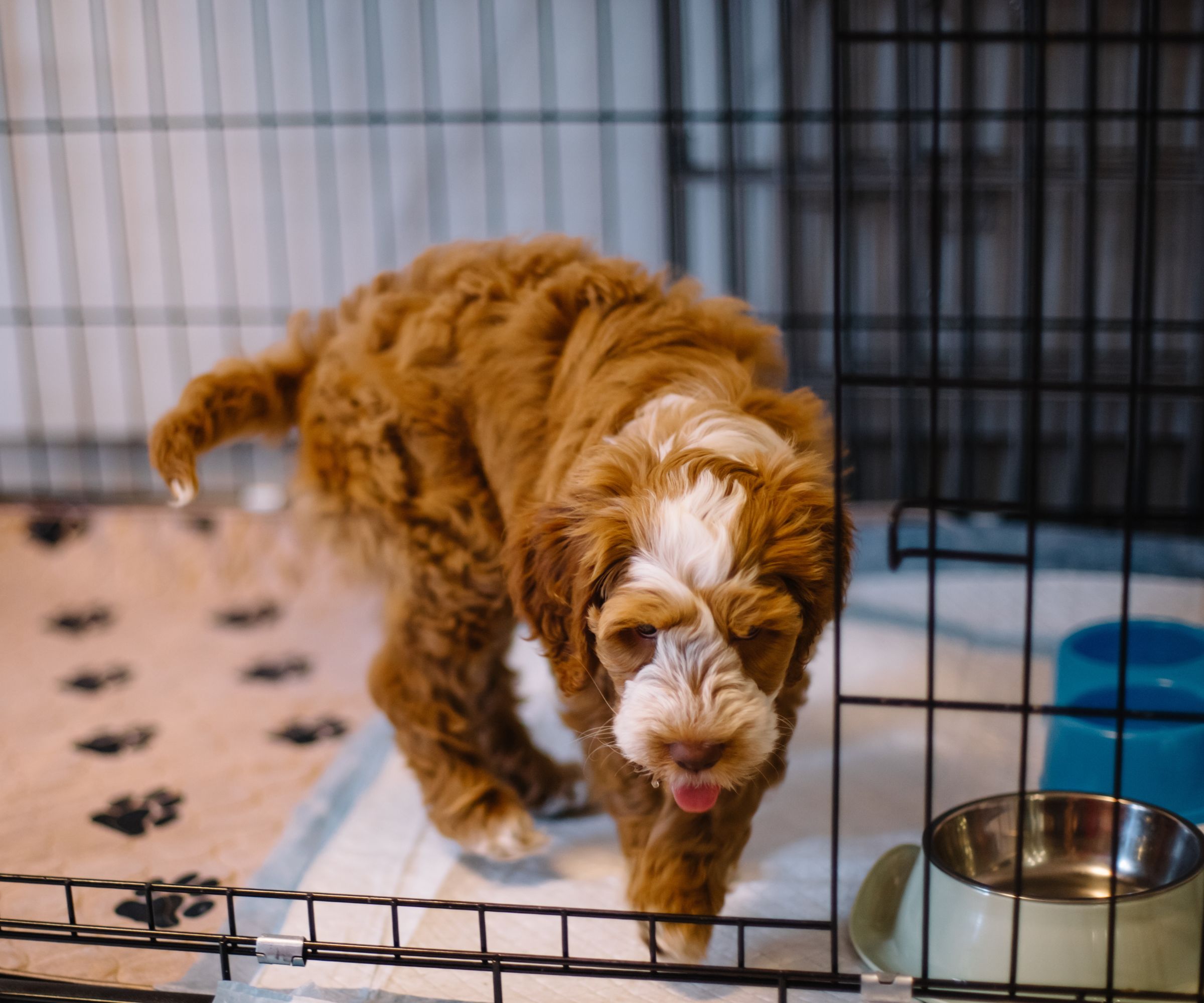
Relocation can surely be stressful, both for humans packing boxes and pets unsure of what's happening, but with the right planning and techniques, you can make the transition as low-stress as possible for everyone.
For those of you living with pets, you'll know that drastic changes in their environment and routines can be disorienting. So, your moving house checklist should include these steps to mitigate stress for pets before, during, and after a move, whether for cats and dogs or smaller animals like rabbits, birds, or reptiles.
Ultimately, the more comfortable and relaxed your pet is during this move, the faster they should adjust to your new home, and the easier it will be for you, ensuring this experience is as fun and exciting as possible.
Tips for moving house with pets
'The biggest challenges pets face during a move include anxiety from the disruption of their routine and the stress of being in a new environment,' explains Dr. Kathryn Dench (MA VetMB), Chief Veterinary Advisor at Paw Origins. 'In my practice, I've seen that approximately 30% of pets show signs of stress such as hiding, loss of appetite, or behavior changes during moves.'
Following the steps below is key to a successful move, ensuring your pet feels comfortable and as relaxed as possible.
1. Prepare pets before the move

'Preparation is key to a smooth transition,' says Dr. Kathryn Dench. 'Pets who are gradually acclimated to the changes in their environment adjust significantly faster, showing less anxiety-related behavior post-move.'
'Start by introducing your pet to their travel crate weeks before the move, making it a positive space with their favorite blankets and toys. If your pet isn't used to or dislikes car travel, taking them on short, gradual trips can help adapt to them.' Try to make these experiences feel as enjoyable or calming as possible, bringing their favorite blanket, toy, or a treat.
A week before the move, designate a quiet room where you can keep your pet on moving day to avoid the inevitable hustle and bustle of relocating items to a removal van. Encouraging them to spend time in this space ahead of time and establishing it as a safe zone can significantly reduce their anxiety when it comes to moving day. While this may not work for every pet's temperament, it could be worth a try.
Animals like cats and dogs love predictability in their daily routine, so be sure to keep food, walk and night schedules similar while getting ready for the move.
'Moving with fish comes with a lot of specifics too, and the preparation should start quite some time before the move itself.' says Nikolay Yanakiev, removal professional at Fantastic Removals. 'You’ll need to take out all of your colorful finny friends and settle them in buckets or bags ready for transportation.'
2. Prepare for the new postcode

'Prepare tags with the new address, and search for a vet in your new area if the old one is too far away,' recommends Nikolay Yanakiev. 'If the dog is microchipped, change the details on it.'
Be sure all vaccinations are current too, as relocations can be stressful on their immune systems.
3. Keep pets calm on the day

On a moving day, if you opt to keep pets in a quiet, empty room away from the chaos check on them regularly to prevent them from becoming anxious or distressed.
'Leave some of their favorite toys and their bed with them to be more comfortable,' recommends Nikolay Yanakiev. 'In addition to preventing anxiety, doing this can prevent them from injuring themselves escaping.'
Another option is to leave your pet with a friend or family member or board them for the day.
'When it’s time to pack the room, put the pet inside a reliable carrier before the removal team goes inside.' When you start to move, make sure your pet's belongings (such as their bed, toys, and bowls) are one of the last things to pack so they can be comfortable and grounded for as long as possible.
4. Ensure the travel is comfortable

When moving your pet, it's important to consider everything they might need in order to make the journey comfortable and relaxing for them. Determine how to tailor the journey to the pet's specific behaviors and needs. Think about the journey and its length to identify any issues that may occur.
When moving any pet, it's important to choose the right carrier. Ensure it is breathable and large enough for the pet to comfortably stretch and lie in. They may also need access to food, water, and litter at all times, so it's best to select a carrier that size suits your pet's needs.
'While driving, always place the pet crate on the back seat of the car and never inside your car’s boot. Don’t even think of leaving it in the removal van. Your pet will be frightened and disoriented enough, so the lack of human comfort and the darkness will just make it worse,' explains Nikolay Yanakiev.
Moving with dogs or cats
'Having your pet's favorite toys, beds, or blankets to make new spaces feel instantly familiar works wonders,' says Dr. Sara Ochoa, a professional veterinarian and contributor to Hound Games.
As you would on any long car journey with a dog, stop for bathroom breaks every hour or so to provide them with water, food, and playtime to reduce their anxiety.
'Additionally, using pheromone sprays or diffusers can significantly reduce anxiety levels in both cats and dogs,' says Dr. Kathryn Dench. This NaturVet herbal calming spray for dogs is a best seller on Amazon.
Moving with rabbits and birds
'Rabbits and birds are very sensitive to temperature,' says Nikolay Yanakiev. 'If your move is on a hot or cold day make sure to put on the air conditioner or heating respectively to maintain a steady temperature in the vehicle. Between 10-24°C (50-75°F) should be alright.
It's also important to ensure the carrier or cage your pet is in isn’t exposed to direct sunlight.
Moving with reptiles
'Reptile lovers may be faced with trying to calm down a snake during a house move. Don’t be alarmed. Snakes and reptiles generally feel comfortable and safe when they go into hiding,' explains Nikolay Yanakiev. 'Placing your reptile in a safe container or carrier and covering it with a blanket will help block out the strange sounds and unfamiliar views, making them feel more at ease.'
Moving with fish
'It’s important to remember that the cargo area of a standard moving van isn’t temperature-controlled and you don’t want to have your fish travel in an uncontrolled environment,' says Nikolay Yanakiev.
So, consider transporting your fish separately in a well-insulated cooler or container with enough water or oxygen to keep them comfortable during the move. To maintain a stable temperature, you might also want to use packs that are gently cooled or heated, depending on the weather conditions.
You should also be careful to drive gently to minimize the stress of movement, avoiding bumpy roads where possible.
5. Help them adjust after the move

This next step is very important for ensuring your pet has a good impression of your new home. While the initial transition may be stressful, preventing any negative or traumatic associations with this new environment is essential for their long-term well-being.
- 'After the move, allow them to adjust to their new home gradually, starting with one room where they can feel secure with familiar toys and bedding before gradually exploring more,' advises Dr. Kathryn Dench.
- 'When unloading furniture, start with any furniture that was moved from the room where your pet spent their time,' recommends Nikolay Yanakiev. 'Recreating a familiar setting may help your pet get used to the new environment.'
- Use familiar items and smells to comfort your pets in their new environment. Don’t wash cat or dog bedding for a while after the move. This way, they will have a familiar scent in the new house.
- You'll need to spread their natural scents all over the house to make them feel at home. So the next time you feel like petting your cat, bring a soft cloth, lightly brush it against their face and neck, and then spread this aroma throughout the house at cat height. This will allow your feline friend to believe they're more at home.
- Once settled, get back your pet on a predictable schedule as soon as possible. This includes regular feeding times, walks, and playtime.
- 'Keep cats indoors for at least a week, and supervise dogs closely when they are outside,' continues Dr. Kathryn Dench. 'This reduces the risk of them trying to return to their old home or getting lost.
- 'Monitor for signs like hiding or changes in appetite that may require extra TLC or vet assistance,' adds Dr. Kethryn Dench. 'Be patient if accidents happen – it's a big change! With a little love and TLC, pets tend to quickly make themselves at home once they realize it's their pack's new den.'
6. Assess the new space

Finally, it's time to sweep your new environment to ensure it is safe for your pets.
For dogs, Nikolay Yanakiev advises, 'Research local laws concerning breeds and vaccinations. Find local parks that allow dogs and find a place for your dog to run and play without a leash. If your new home has a garden, check for holes and routes for your dog to escape and check if the grass areas are sprayed against fleas and ticks.'
FAQs
What do you need to know when using professional pet moving services?
If you are only traveling a short distance, you may find keeping your pet with you and the family easier and more cost-effective. However, if you’re traveling long distances, pet transportation offers an easy, safe, and stress-free way to make the move,' says Ed Burton, CEO and Co-Founder of Upmove. 'Luckily, there are dedicated pet transportation services available that provide door-to-door transport. If you’re considering a transportation service, you must do your research to find an experienced pet transport provider that understands your animal’s unique needs.'
According to Ed, there are six important questions to consider when exploring pet relocation options to ensure the best quality of care:
1. What are the travel crates like?
Some pet travel crates have climate control to ensure your dog is comfortable no matter what the season. Summers can get extremely hot on the road, especially in August, which is one of the busiest months for moving, so this is something worth enquiring about ahead of time.
2. What happens if my pet needs a vet?
As pet owners, you hope nothing will go wrong during a relocation. But, like humans, pets can become unwell without warning. It’s a good idea to chat with your pet transportation company about their access to vets should the need arise. That way, you can rest easy knowing they’ll always have access to the care they need.
3. How do drivers monitor pets while in transit?
With the driver focussing on the road ahead and your pet safely stored in their own crate or cabin, pet couriers often have additional measures to ensure your animal can be monitored while in transit. Some services have alarm systems that alert the driver to changes in the vehicle, they may also have cameras installed enabling the driver to see your pet at all times.
4. Will my pet have access to food and water before and during transportation?
It’s common practice to ensure that animals have access to fresh drinking water. But, as a general rule, services don’t provide food as this can cause an upset stomach. Check-in with your service provider to find out their policy on this.
5. Does the service offer door-to-door pet transportation?
Typically, door-to-door service is the least stressful approach to transporting your pet. But, check in with your courier as some services require you to leave your pet at a designated drop-off spot.
With preparation, patience, and putting your pet's needs first throughout the move, you can help ensure they feel secure and comfortable during this transition.







